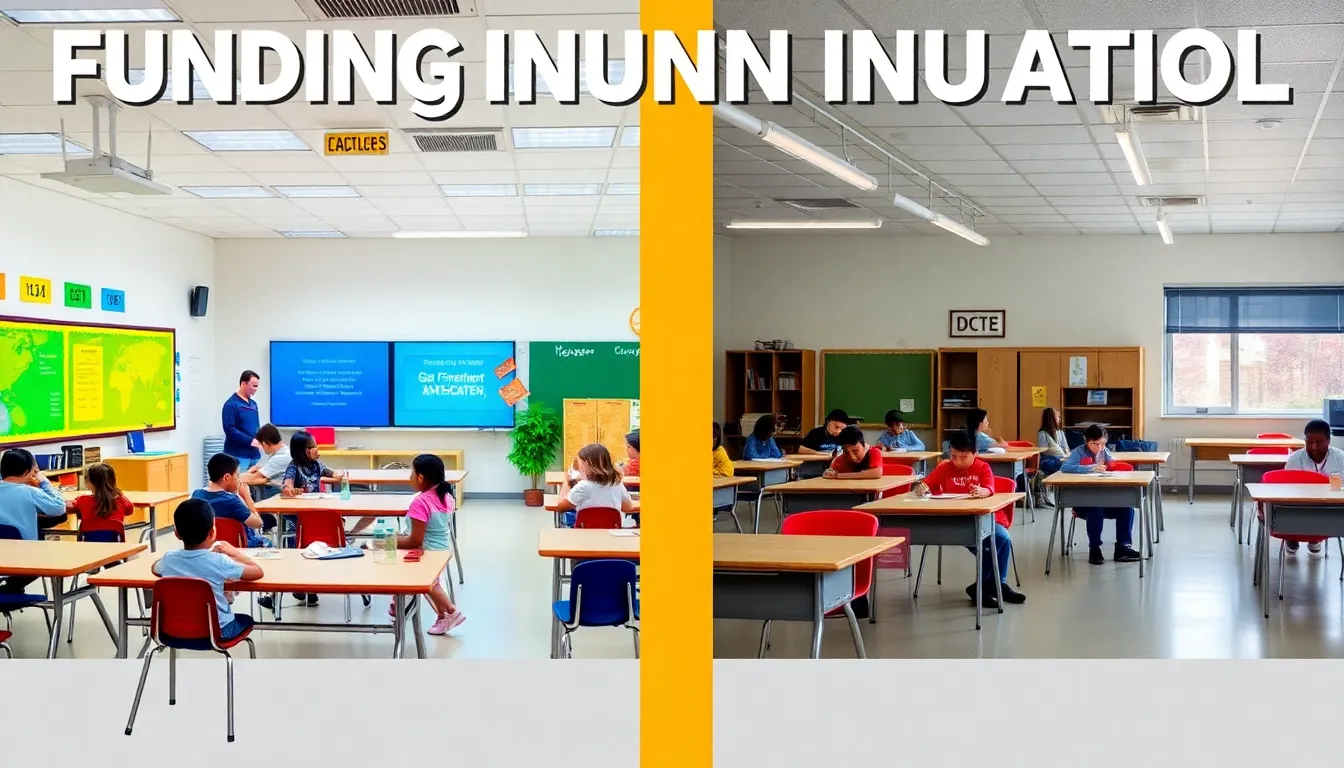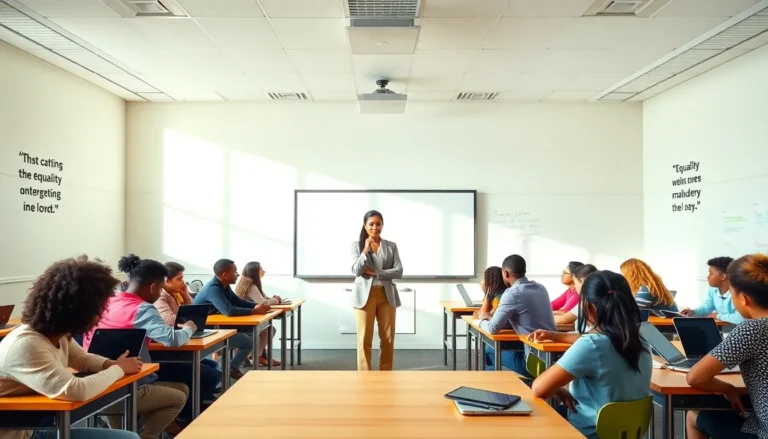Education today is a hot-button issue. It’s like the weather, everyone’s talking about it, but no one seems to be doing much about it. With funding inequalities, mental health challenges, and technology gaps, the hurdles are numerous. But don’t worry, we’ll break this down in a light-hearted yet insightful way, ensuring that by the end of this piece, you’ll feel equipped to navigate the often murky waters of modern education. Grab a cup of coffee, buckle up, and let’s explore the pressing issues that educators and students face, and perhaps have a chuckle or two along the way.
Table of Contents
ToggleFunding Inequalities

Funding disparities across the education system create a massive divide that’s hard to ignore. In many parts of the country, a school’s funding often correlates directly with the wealth of its community.
Impact on Resources and Facilities
Schools in affluent neighborhoods typically boast updated facilities, advanced technology, and a wealth of educational resources. In contrast, schools in lower-income areas often struggle to provide basic materials for learning. Imagine trying to teach science without proper lab equipment or struggling to keep students engaged in a rundown classroom. These disparities create an uneven playing field. Schools need the right resources to succeed, yet, not all have access.
Teacher Salaries and Retention
Teacher salaries reflect this funding dilemma. In many states, teachers earn significantly less than their counterparts in other professions requiring similar education and expertise. Low salaries lead to high turnover rates, creating instability in learning environments. When schools can’t attract or retain quality educators, students invariably suffer. So, it raises the question: how can we expect excellence in education when the very people tasked with delivering it are undervalued?
Access to Quality Education
Access to education remains a pressing issue, especially when comparing urban and rural settings.
Rural vs. Urban Disparities
Urban areas often benefit from greater educational infrastructure, yet rural students may face significant hurdles. Limited access to advanced placement classes, extracurricular activities, and even qualified educators restricts opportunities for those living in less populated areas. Picture a high schooler in a small town who dreams of becoming an engineer. Without the necessary resources or mentorship, their dreams may quickly fade away.
Special Education Resources
Another layer complicating the access issue is the availability of special education resources. Schools must cater to diverse learning needs effectively, yet they often fall short. Families navigating these systems frequently encounter long waiting lists and inadequate support. The lack of proper resources means that students with disabilities may not receive the education they deserve, further emphasizing systemic inequalities.
Mental Health Challenges in Schools
Mental health has emerged as a critical issue in education today. It’s not just about grades anymore: it’s about ensuring students are emotionally equipped to handle the pressures of school life.
Stigma Around Mental Health
Unfortunately, there remains a stigma surrounding mental health, which can prevent students from seeking the help they need. Many young people grappling with anxiety or depression feel isolated, fearing judgment from peers and adults alike. This stigma can lead to a downward spiral, impacting academic performance and overall well-being.
Support Systems for Students
Creating safe, supportive environments in schools is crucial. Staff training on recognizing signs of mental distress, along with accessible counseling services, represents a step in the right direction. Schools have a unique opportunity to foster resilience in their students, ensuring that mental health is prioritized alongside academics.
Technology and Digital Divide
The role of technology in education continues to expand, but not every student has equal access.
Access to Technology and Internet
The digital divide remains stark across the country. While some students zip through their assignments on the latest devices, others might struggle with outdated technology or no internet access at all. This divides educational opportunities, especially during remote learning phases when access to technology has proven crucial. Everyone deserves a chance to learn at their best, so addressing these gaps should be a top priority.
Integrating Technology in the Classroom
Also, simply having access isn’t enough. Schools need to effectively integrate technology into their curricula. Doing so prepares students for an increasingly digital future, equipping them with skills that are vital in today’s job market. Yet, without proper training for teachers on how to incorporate technology, it becomes another missed opportunity.
Curriculum Relevance and Rigor
One of the most significant debates in education revolves around curriculum. Is what they’re teaching students actually preparing them for the future?
Preparing Students for the Future
As job markets evolve, educational institutions must keep pace. Curriculum relevance is critical, requiring a review of what skills are truly necessary. For instance, courses on financial literacy and emotional intelligence could provide students with essential life skills that aren’t traditionally part of standard curricula.
Addressing Diverse Learning Needs
Inclusivity is another factor: curricula should cater not just to the majority but to all learning styles. Differentiation in teaching methods ensures that everyone can learn in ways that resonate with them, whether it’s through visual aids, hands-on activities, or traditional lectures. Meeting diverse needs creates a more balanced educational experience.



